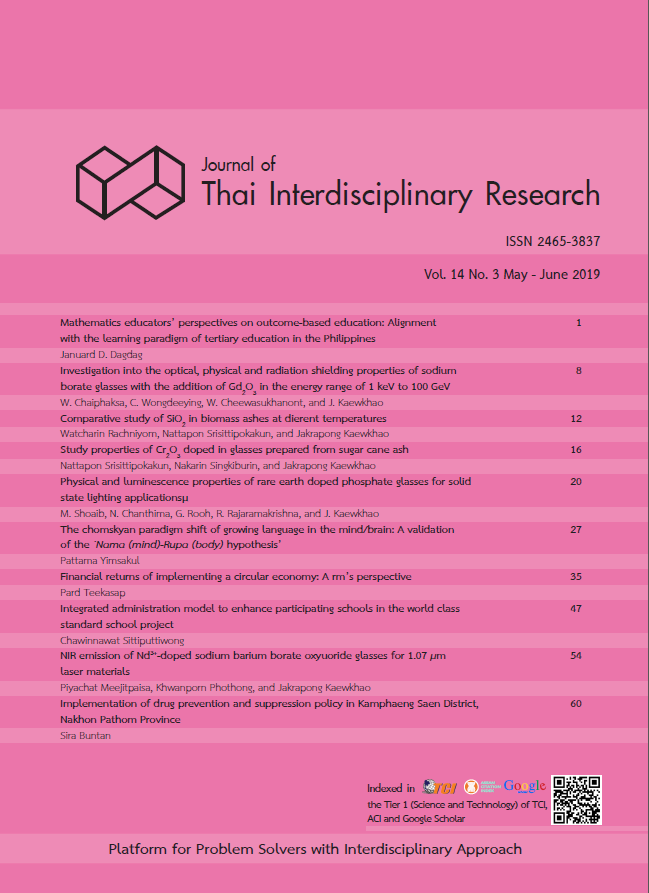Comparative study of SiO2 in biomass ashes at dierent temperatures
Main Article Content
Abstract
In this work a range of biomass ashes were investigated in order to understand their chemical compositions. Ashes were calcined at dierent temperatures from 400-1,0000 oC for 2 hours. The SiO2 content of the samples was compared before and after calcination. Rice husk and rice straw were found to show the highest SiO2 content of between 92.10 and 85.00 wt.% when calcined at 1,0000 oC. The other biomass samples tested were found to produce ash with an SiO2 content ranging from 9.54–67.90 wt.%. It was found that running the calcining process at high temperature can lead to an increase in the SiO2 concentration of some biomass ashes. In this research it was found that SiO2 concentration of sugar cane, eucalyptus, stubble corn and rubber ashes was not aected by calcination temperature.
Article Details
References
Y. Rueangtaweep, N. Srisittipokakun, K. Boonin, P. Yasaka, J. Kaewkhao, Characterization of Rice Straw and Utilization in Glass Production, Adv Mat Res. 748 (2013) 304-308.
V. Steven, M. Mikko, D. Olli, A review of biomass ash properties towards treatment and recycling, Renew Sust Energ Rev. 96 (2018) 479-486.
V. V. Stanislav, B. David, K. A. Lars, G. V. Christina, An overview of the composition and application of biomass ash. Part 2. Potential utilisation, technological and ecological advantages and challenges. Fuel.105 (2013) 19-39.
M. M. Younes, H. A. Abdel-Rahman, M. M. Khattab, Utilization of rice husk ash and waste glass in the production of ternary. J Bridge Eng. 20 (2018) 42-50.
N. Srisittipokakun, Y. Ruangtaweep, W. Rachniyom, K. Boonin, J. Kaewkhao. CuO, MnO2 and Fe2O3 doped biomass ash as silica source for glass production in Thailand. Results Phys. 7 (2017) 3449-3454.
X. Weiting, Y. L. Tommy, A. M. Shazim, Microstructure and reactivity of rich husk ash. Constr Build Mater. 29 (2012) 541-547.


